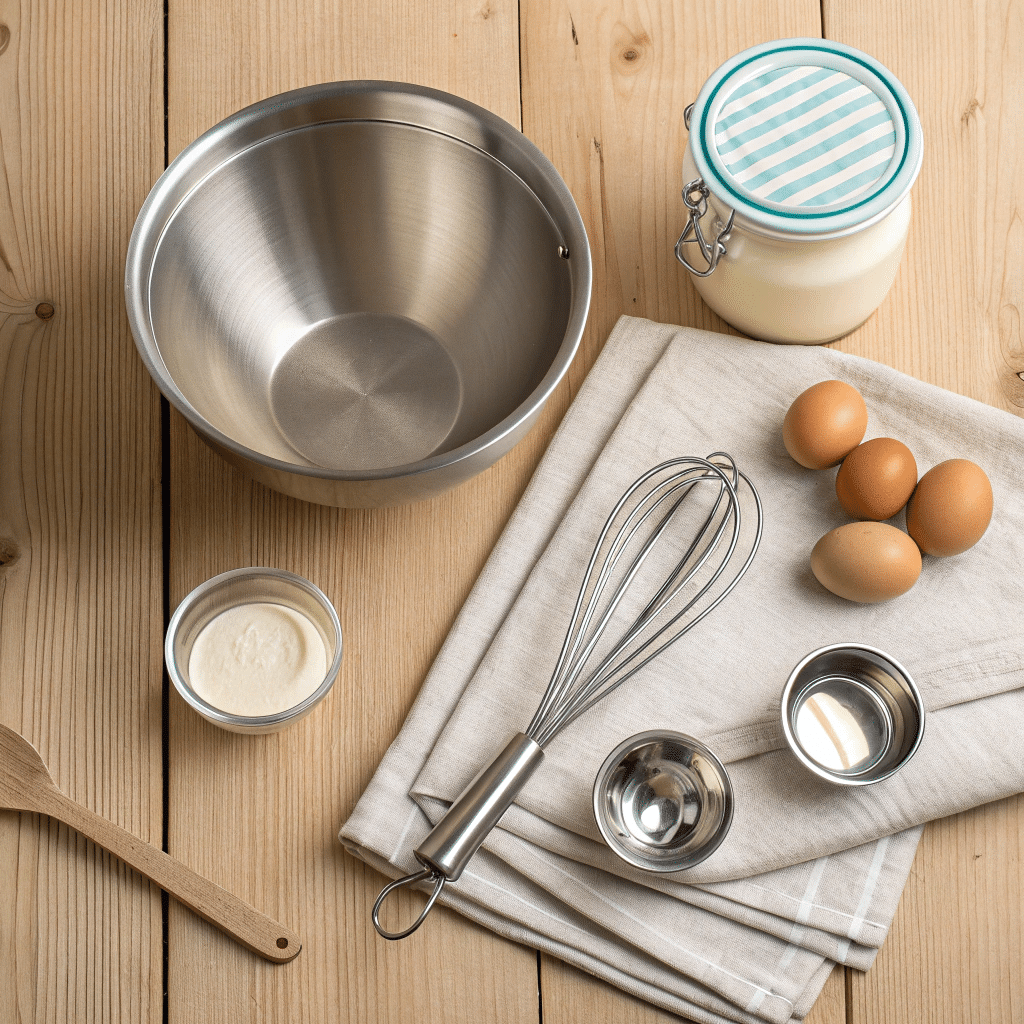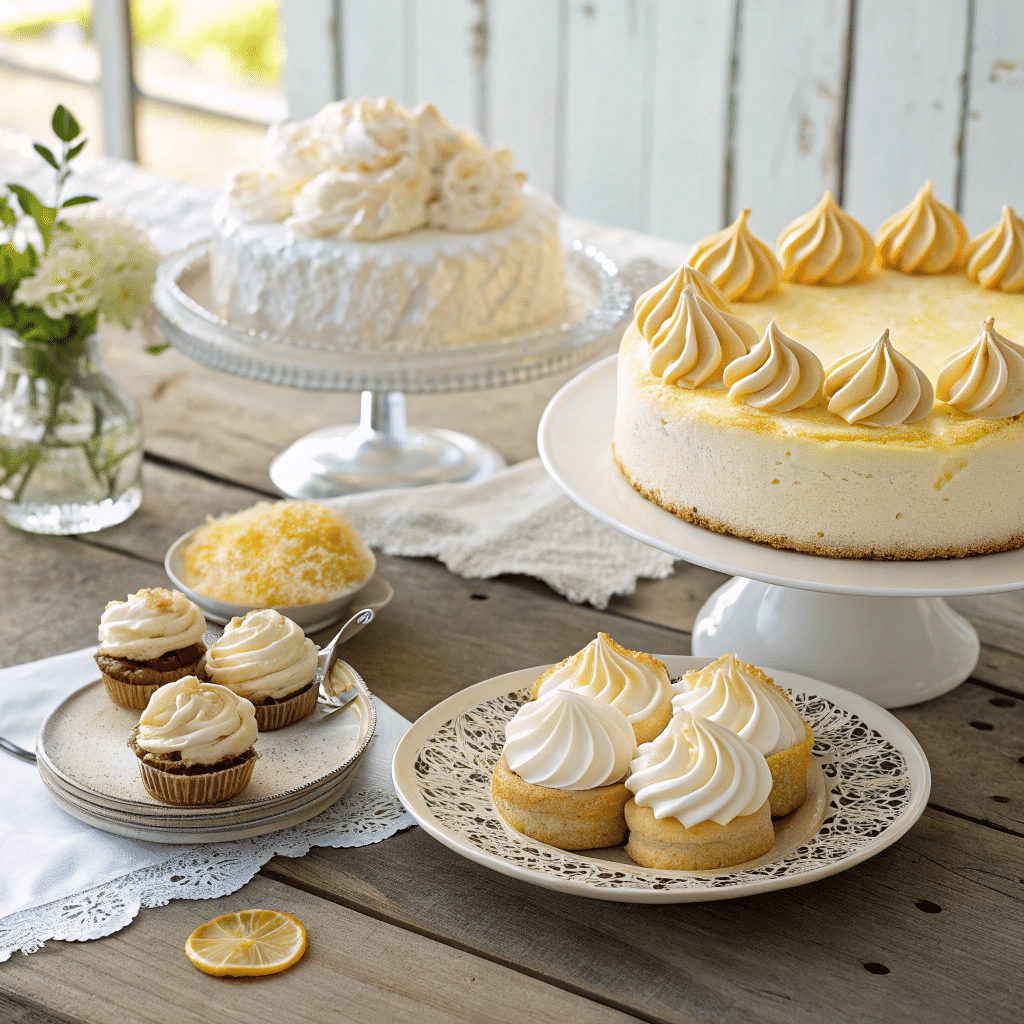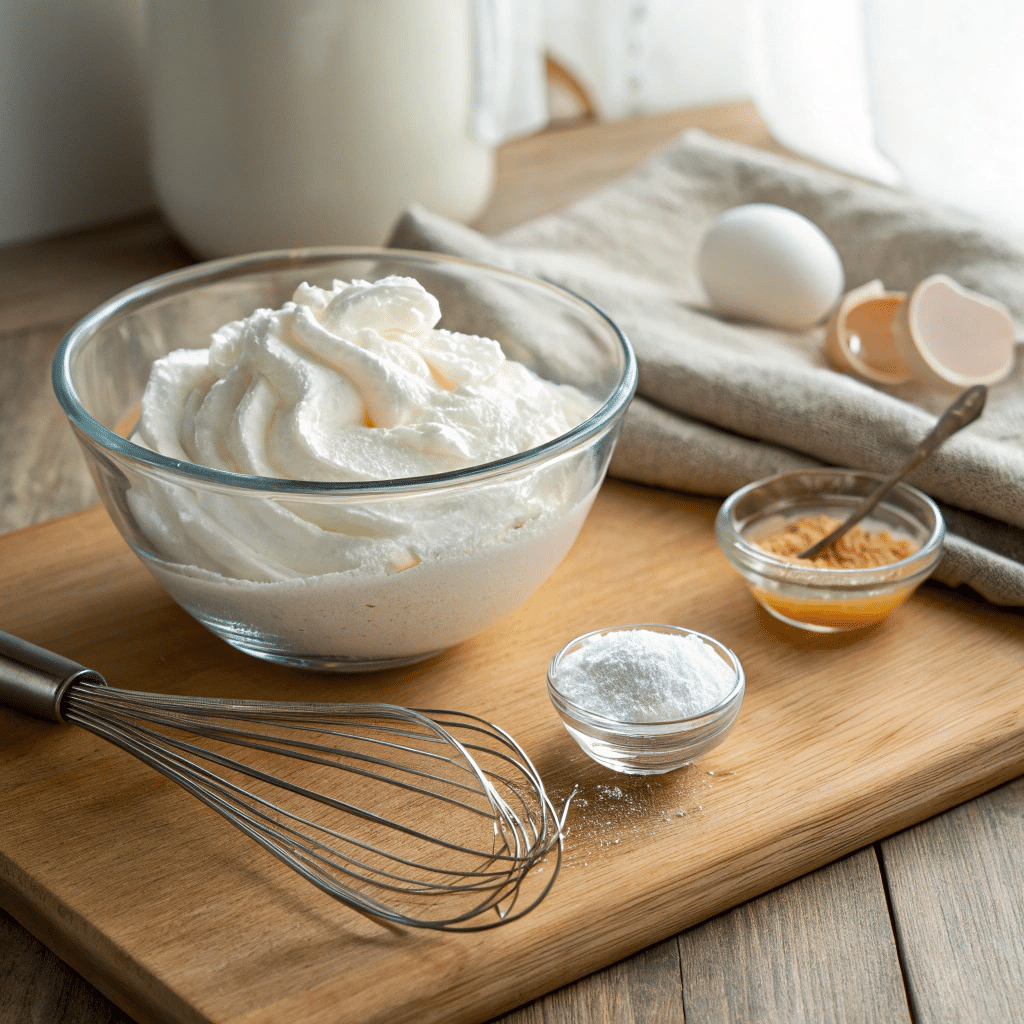Whipping egg whites stiff is one of those kitchen skills that looks a little mysterious until you’ve tried it a few times. The first time I attempted it, I thought I’d nailed it—only to watch my “peaks” slump into a puddle five minutes later. If you’ve been there, don’t worry. With the right technique, you can turn plain egg whites into glossy, cloud-like peaks perfect for meringues, soufflés, macarons, and even light-as-air pancakes.
In this tutorial, I’ll walk you through exactly how to whip egg whites stiff—with tips, tricks, and recipe-ready instructions you can actually use today. Grab your whisk (or stand mixer) and let’s get to it.
Why Whip Egg Whites at All?

Egg whites may look simple, but they’re like nature’s version of a balloon. When you whip them, air gets trapped inside, creating volume and structure. This is why angel food cake rises so tall, why meringue cookies crunch so lightly, and why mousse feels like a dream on the tongue.
Whipped egg whites are the unsung heroes of baking. Think of them as the scaffolding that keeps desserts standing tall.
Tools You’ll Need

Before you crack those eggs, let’s gather a few basics:
- Mixing bowl: Glass, metal, or copper. (Plastic tends to hold onto oils and can deflate your whites.)
- Whisk or mixer: A balloon whisk works, but if you’ve got a stand mixer, it’s your new best friend.
- Egg whisk or hand mixer: Great if you’re going old-school.
- Cream of tartar: This little helper stabilizes egg whites so they don’t collapse. Lemon juice or vinegar works too.
Step-by-Step: How to Whip Egg Whites Stiff
Step 1: Start with Room-Temperature Egg Whites
Cold eggs are easier to separate, but room-temperature whites whip higher and faster. I usually separate my eggs right out of the fridge, then let the whites sit for about 20 minutes before whipping.
Pro tip: Even a tiny drop of yolk will stop your whites from reaching stiff peaks. If that happens, start over—it’s worth it.
Step 2: Clean Bowl, Clean Tools
Oil or grease is the enemy here. Wipe down your bowl and whisk with vinegar or lemon juice to be extra safe. That’s the difference between sad, floppy whites and tall, glossy ones.
Step 3: Whip on Low Speed First
If you start too fast, you’ll get big, unstable bubbles. Begin whipping slowly until the egg whites look foamy, then increase the speed gradually. Think of it like stretching before a workout—you’re warming them up for the heavy lifting.
Step 4: Add Cream of Tartar
Once your whites look frothy, add a pinch of cream of tartar. This acid helps stabilize the foam, keeping your stiff peaks strong.
(If you’re out of cream of tartar, swap in a squeeze of lemon juice or a drop of vinegar. Works like a charm.)
Step 5: Whip to Soft Peaks First
At soft peak stage, your whisk will leave trails, and the whites will form little peaks that flop over when lifted. It’s the halfway point—and it’s beautiful, but not where we stop today.
Step 6: Keep Whipping to Stiff Peaks
Now the magic happens. Keep beating until the peaks stand straight up when you lift the whisk. They should be shiny, smooth, and not grainy. This is stiff peak perfection.
Warning: Overwhipping can turn your whites grainy and dry. Once you see stiff peaks, stop.
How to Use Stiff Egg Whites

So now you’ve got them—what next? Here are a few classic recipes that rely on whipped whites:
- Meringue Recipe: Crisp outside, chewy inside. A true egg white showpiece.
- Egg White Frosting: Light, glossy, and perfect for cakes.
- Meringue Cookies: Sweet, airy, and melt-in-your-mouth good.
- Macarons: The French classic where stiff peaks are non-negotiable.
- Soufflé: That dramatic rise is all thanks to whipped egg whites.
- Pancakes or waffles: Fold them in for cloud-like fluffiness.
Common Problems (and How to Fix Them)
- Egg whites won’t stiffen:
- Check for yolk or grease in the bowl.
- Try adding cream of tartar or lemon juice.
- Egg whites turned grainy:
- You overbeat them. Unfortunately, there’s no going back—time to start over.
- Peaks collapsed when folded into batter:
- Fold too roughly and you’ll lose the air. Always fold gently with a spatula, like you’re scooping clouds.
Recipe: Homemade Whipped Egg Whites for Baking

Here’s a quick recipe card for you to follow:
Ingredients:
- 4 egg whites (room temperature)
- ¼ tsp cream of tartar
- Pinch of salt
Instructions:
- Place egg whites in a clean, dry mixing bowl.
- Whip on low speed until foamy.
- Add cream of tartar and salt.
- Increase speed to medium-high, whipping until soft peaks form.
- Continue whipping until stiff peaks hold their shape.
- Use immediately in your recipe.
Final Thoughts
Whipping egg whites stiff isn’t just about following steps—it’s about practice. The more you do it, the more you’ll know exactly when to stop whisking, how glossy is glossy enough, and when to fold them gently into your batter.
So grab some eggs, give this method a try, and before you know it, you’ll be whipping up meringue cookies, frostings, and soufflés like a pro. Remember: a clean bowl, room-temperature eggs, and a little patience are the true ingredients to success.
Now, go make something sweet!
FAQ: How to Whip Egg Whites Stiff
Q: Can I whip egg whites without cream of tartar?
Yes—use lemon juice or vinegar instead. They’ll also stabilize your whites.
Q: Can I whip egg whites by hand?
Definitely. It’s a workout, though! Grab a balloon whisk and be patient.
Q: How long does it take to whip egg whites?
With a mixer, usually 3–5 minutes. By hand, closer to 10–12 minutes.
Q: Can I make whipped egg whites ahead of time?
Nope. They deflate quickly. Always whip them fresh and use them right away.
Q: What does “stiff peaks” look like?
When you lift the whisk, the whites should stand straight up without curling.

